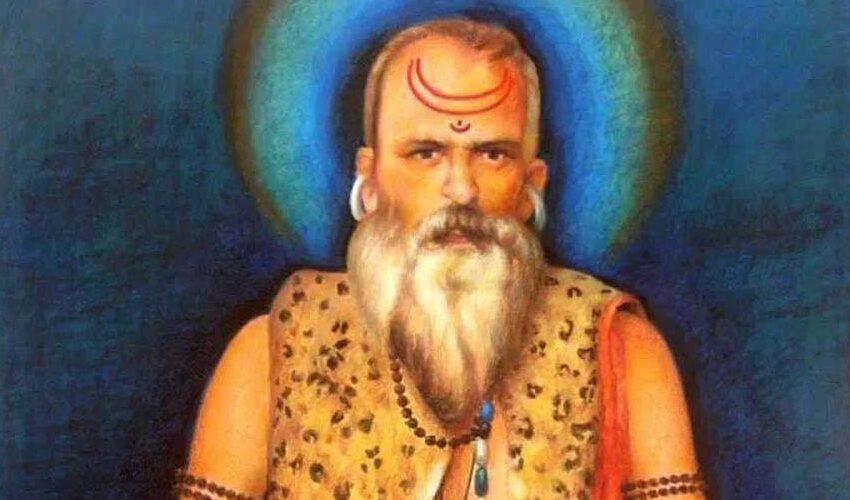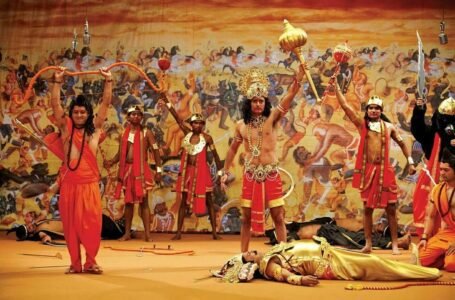Dr. Ramnath Aghori: Journey of a Modern Aghori Yogi

-Anushka Sengupta
Dr. Ramnath Aghori—sometimes called Yogiraj or Aghoreshwar—appeared in the mid-20th century as one of the most legendary and mysterious figures of the Aghori tantric tradition. Unlike ascetics who retreat into cloisters, Ramnath roamed freely across the borders of India and Nepal, drawing admirers in equal measure of spiritual devotees and kings. His life, teachings and radical embodiment of taboo-breaking tantra highlight a deep connection to non-dual traditions and transformative experiences.
Ramnath’s spiritual lineage traces back to the Nath yogis—mystic disciples of Gorakhnath—before he fully embraced the Aghori path, which emphasizes transcendence through embracing what mainstream society rejects. As noted by biographers, he departed from the Nath order to pursue a more extreme tantric path aligned with the Aghori
Under the guidance of Byom Shankar Aghori of Bakreshwar (said to have Indian and Tibetan tantric roots), Ramnath immersed himself in esoteric practices, ultimately earning recognition at Samye Monastery in Tibet.
Renowned for extreme austerities, Dr. Ramnath spent years in cremation grounds—embracing mortality to transcend societal taboos. British filmmakers Rajesh and Naresh Bedi captured his powerful presence in the 1994 documentary Living with the Dead, showing him meditating amid cremations, using skull bowls, and employing dark rituals in challenging living conditions. This footage arguably introduced Western audiences to the stark reality of Aghori practices.
Philosophically, Ramnath and other Aghoris echo the Kapalika tradition: they purposefully transgress purity rules to realize non-duality and confront illusions of life and death. As historian James Mallinson says, such practices “transcend purity laws in order to realise ultimate non‑duality”.
Remarkably, Ramnath became spiritual mentor to top-tier Nepalese royalty, including King Tribhuvan and King Mahendra. Texts suggest he even influenced the founding of Tribhuvan Universityskultech.com. This paradoxical blend of taboo observance and institutional influence highlights his role as a bridge between the fringe and the mainstream.
Dr. Ramnath cast Aghori practice as a type of spiritual-scientific investigation. One disciple remembered Ramnath as calling himself a “scientist doing experiments” with energy and matter—turning flesh into mithai, healing wounds, swimming through invisible forces, with Mother Nature as his “teacher”. This corresponds to a tantric worldview which treats matter and energy as malleable vehicles of spiritual insight.
Ramnath’s death is remembered as a yogic samadhi in 1972–73, following King Mahendra’s reign, though some sources mention 1982—reflecting ambiguity around his departure from the physical realm. His immediate disciples—about 10 or fewer—carried his tantric practices forward, particularly in Nepal. They constituted a living lineage of Mahasiddhas, preserving his blend of Nath and Aghori wisdom.
Dr. Ramnath’s life remains controversial—mixing reverence with sensationalism. Critics caution against mythologizing him as a divine incarnation, reinforcing that he was foremost a powerful tantric yogi, not a deity. Academics like Mallinson commented on Ramnath’s authenticity: he was initiated, not self-proclaimed, and resisted public spectacle. He stood out as a genuine Aghori lodged in lineage and tradition.
Dr. Ramnath Aghori represented a radical hybrid – steeped in ancient tantric traditions, he took to cremation-ground practices, taboo-shattering austerities and intense Shiva devotion. He swirled in royal circles, shaped organised religion and was shot by the mainstream media. He embodied the Aghori paradox: both dreaded and worshipped, anatman and atman, annihilating and sanctifying. His life confronts us with a spiritual challenge for our times: how spiritual depth can flourish in the margins and the porous boundary between sacred and profane.
Dr. Ramnath Aghori was an unforgettable character in the annals of recent tantric mysticism. This paper examines his life through thematic prisms—heritage, religion, royal patronage and cultural impact—set within the context of non-duality, rebellion and spiritual materialism.
Dr. Ramnath Aghori defies classification. A tantric adept, cremation-ground yogi, and royal guru, he lived on the threshold of the sacred and the profane. Though rooted in the Aghori tradition, Ramnath’s story intersects with Nepalese royalty, Indian pilgrimage culture, and Western curiosity. Understanding his journey involves studying a deeply embodied tradition where transgression becomes transformation.
Born into the Nath lineage, Ramnath transitioned to the Aghori path under Byom Shankar Aghori of Bakreshwar. His spiritual DNA is therefore a blend of Hatha Yoga, Tantra, and Kapalika rituals. Nath yogis like Gorakhnath emphasized inner alchemy, while Aghoris focus on confronting death and pollution.
The symbolic shift from the structured Nath order to the anarchic Aghori path reflects the dynamic between institutional control and spiritual rebellion.
Ramnath’s life in cremation grounds, his use of skulls (kapala), and his meditative practices reflected the tantric goal of non-duality (advaita)—to transcend dualities of life/death, pure/impure, divine/mundane. Aghori rituals break societal taboos to dismantle the ego and social conditioning. Ramnath’s use of the body and taboo spaces reclaims agency over bodily politics and ritual purity, resisting dominant norms.
He reinforces Spivak’s ideas that she discussed in “Can the Subaltern Speak?” where he represents a subaltern mystic voice, pushing back against sanitized spirituality by grounding divine experience in the raw physicality of death.
Dr. Ramnath was spiritual adviser to King Tribhuvan and King Mahendra of Nepal, allegedly influencing national efforts like Tribhuvan University. His role was not without ritual. He doled out tactical spiritual advice in times of political upheaval. Ramnath’s affinity for monarchy shows how mysticism can seep into statecraft, where power and spirituality coalesce.
Ramnath is quoted, “I’m just a scientist fiddling with matter and energy.” This mystical empiricism is consistent with tantric cosmology, in which energy (Shakti) is the source of all transformation. He professed alchemy and psychic surgery. These spiritual occurrences disrupt our concept of “real” and call forth hyperreality, where distinctions between real, symbolic, and magical erode.
Ramnath was introduced to the world by such documentaries as Living with the Dead (BBC), which portrayed him as a cremation-ground mystic. While his magic was buzzed, his bona fides as a magician were unassailable. The media made Ramnath into a mythic figure, smoothing away his subtlety into a palatable symbol of belief for the world to swallow.
Ramnath passed into samadhi in the early 1970s (or 1982, per some sources). His lineage continues in Nepal, though only a few disciples directly carry his practices. Some revere him as an incarnation of Shiva, while others caution against deification, emphasizing his human yogic discipline. Dr. Ramnath Aghori lived a paradox: a man of the dead who counseled kings, a taboo-breaker who upheld dharma in his own way. His life is not easily digestible—it demands spiritual maturity and cultural nuance. He invites us to ask uncomfortable questions about purity, death, and the human ego. Above all, his life teaches that transcendence lies not in escaping the world, but in transforming it from within.


